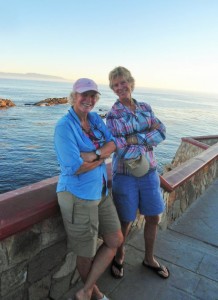
November 9, 2014 – Day 2 is coming to a close here at Villarino’s Campground and RV Park in Punta Banda. Today we are heading to Ensenada, with our first stop at Art Gallery (Closed) and Cultural Centre (Open). The old casino was full of tourists, both those off the cruise ship and locals attending a fundraiser. Folks really enjoyed the stop, particularly both the current bar and former bar where the heavy gamblers secluded themselves back in the day. After a bit of searching we even found the tile that had intentional been placed out of sequence. Next we had a short drive thru the old town including a drive by at Hussong’s Cantina, the pickup point in the afternoon. Once we stopped folks headed in several directions, myself included. I did see some people after I found parking and others later having lunch, it was hot, however a stiff ocean breeze kept temperatures to a reasonable level for walking around. Picked the gang up at 2:00 pm on the dot and we headed back to the campground and beach. Other than the pedestrian jaywalking across Mex 1 in town coming razor close to being a traffic statistic as a motorcycle roared up to a red light in between lanes (popping out in front of our Van), the day was without incident.

Day 0 we all assembled at in Potrero and headed to the border at about 10:00 am, it had warmed up the day before and the trend continued, it was hot. We crossed in Mexico, paid a visit to the immigration office and headed for the exit back into the US. All went smoothly except for Randy, who ended up with a most curious American border official asking the most unique questions. To paraphrase “You say you first entered the US from Canada, why don’t you have an entry stamp in your Passport that says that?” Clearly this fellow has not spent much (likely never) or any time on the US Canada Border. Does anyone out there know anyone who has had a Canadian Passport stamped on entry from Canada to the US by land (just asking)?

Later we hosted our Rendezvous Reception and Baja Orientation all went well as Lisa put together great grub as always and I ensured the beer and wine were cold, red wine uncorked and flowing freely. These are so much fun as the group is so excited to get going on the big Baja adventure. The next morning we headed off on schedule, we just needed to add some air to Ferne’s tire and tighten up Gary & Cheryl’s hitch. It took a while for all of us to get across, but we did and were heading off Hwy 3 to Tecate well past town when we heard that Les & Ann were being pulled over by the police. For what we asked? Unfortunately they had mistakenly changed their radio channel to 16 so we did were not sure. Anyway not a big deal, they were just concerned their bikes were bouncing around a lot and perhaps loose. They were on their way in no time. We made our COSTCO stop at noon precisely for some supplies, lunch and the ATM then off for fuel and finally to Punta Banda. On arrival everyone set up then we headed off to La Bufadora which was not doing much Buffing. However the merchant gauntlet was impressive and folks did enjoy the interaction with the vendors. We finished the first day in Mexico with an impromptu happy hour with David pouring Tequila shooters, perfect as the evening came so to the cool evening, this beverage certainly warmed everyone up.

Tomorrow we head off to see Fidel on the beach and one more day of busy driving ahead of us. Note to self, Baja Mil starts on Wednesday, November 12th, we will be driving from Fidel’s to Catavina, this could get interesting.
Did you know?
Ensenada is a Pacific coastal city in Mexico, the third-largest in Baja California. Lying 125 kilometres (78 mi) south of San Diego on the Baja California Peninsula, it is locally referred to as La Cenicienta del Pacífico, “The Cinderella of the Pacific”.


One of the first settlements founded in the Californias, Ensenada has emerged as a cruise ship destination, aerospace center, and there is a nearby region to the north east where wine grapes are grown. It is said that the first Vitis vinifera made it to the region’s San Ignacio Mission in 1703, when Jesuit Padre Juan de Ugarte planted the first vineyards there.


Situated on the coastline of Bahía de Todos Santos—an inlet of the Pacific Ocean on the peninsula’s Gold Coast—the Port of Ensenada is an important commercial, fishing, and tourist port. The city is home to a navy base, army base, and Ensenada Airport, a military airfield which doubles as an airport of entry into Mexico.
Ensenada is the municipal seat and cultural and commercial center of Ensenada Municipality, one of five into which the state is divided. As of 2010, the city of Ensenada had a population of 466,814. Ensenada is backed by small mountain ranges. Proximity to the Pacific and a warm Mediterranean latitude create mild year-round weather. The rainy season during the winter is short and the area is prone to prolonged droughts, which can threaten its grape harvests. The National Park Constitution of 1857 created the Sierra de Juarez and San Pedro Martir National Parks, which maintain one of the best astronomical observatories in the country.

When the first European explorers discovered the region, the Yuman Indians inhabited the region, of which tribal groups such as the Kiliwa, Paipai and Kumiai still exist. These semi-nomadic indigenous people lived in the bay area and interior valleys of the Sierra de Juárez and San Pedro Mártir. Bahia Todos Santos, on which Ensenada now stands, was first reached by sea by the Portuguese explorer Juan Rodríguez Cabrillo on the vessels El Salvador and Victoria. The city was founded September 17, 1542 under the name San Mateo. In 1602, while mapping the coast of the Californias in search of safe harbors for returning Spanish galleons from Manila to Acapulco, the city was renamed Ensenada de Todos Santos by Sebastián Vizcaíno.

The first permanent settlement was established by the Jesuits during the seventeenth or eighteenth century. After the expulsion of the Jesuits in 1768, the Dominicans took over the representation of Europe in what is now Ensenada. In 1805, José Manuel Ruiz Carillo obtained permission to establish himself in Ensenada, being appointed governor of Baja California and building in Ensenada a house that survived until the final part of that century, despite being briefly taken by the American William Walker, the self-declared “President” of the Republic of Lower California, in 1853-54.


In 1882, Ensenada was designated the capital of Baja California, and attempts at developing the area were made by the English Mexican Land and Colonization Company. These were interrupted by the Mexican Revolution, which left the area devastated. In 1915, the capital was transferred to Mexicali, and in 1930 the population of Ensenada was only 5,000. During the early part of the twentieth century, the city’s name was shortened from Ensenada de Todos Santos to Ensenada, a change made in order to avoid confusion with Todos Santos in Baja California Sur.



